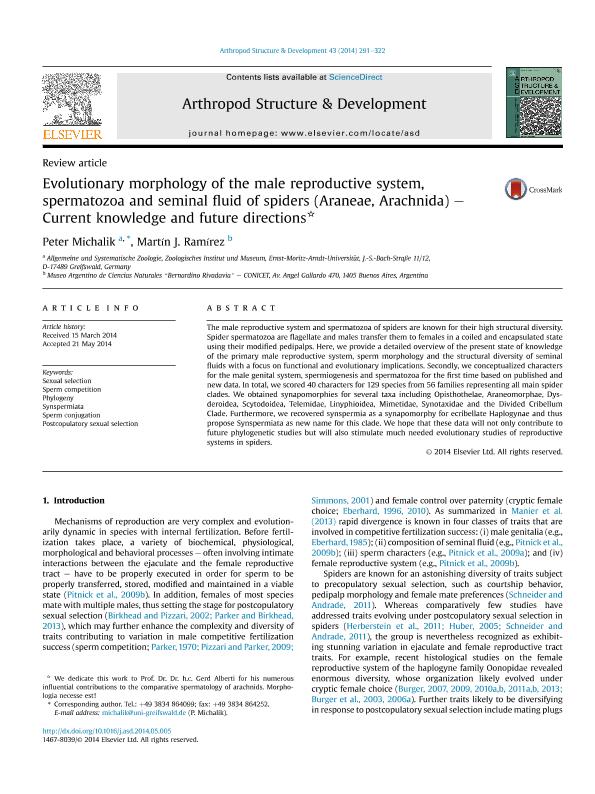Artículo
Evolutionary morphology of the male reproductive system, spermatozoa and seminal fluid of spiders (Araneae, Arachnida) e Current knowledge and future directions
Fecha de publicación:
07/2014
Editorial:
Elsevier
Revista:
Arthropod Structure & Development
ISSN:
1467-8039
Idioma:
Inglés
Tipo de recurso:
Artículo publicado
Clasificación temática:
Resumen
The male reproductive system and spermatozoa of spiders are known for their high structural diversity. Spider spermatozoa are flagellate and males transfer them to females in a coiled and encapsulated state using their modified pedipalps. Here, we provide a detailed overview of the present state of knowledge of the primary male reproductive system, sperm morphology and the structural diversity of seminal fluids with a focus on functional and evolutionary implications. Secondly, we conceptualized characters for the male genital system, spermiogenesis and spermatozoa for the first time based on published and new data. In total, we scored 40 characters for 129 species from 56 families representing all main spider clades. We obtained synapomorphies for several taxa including Opisthothelae, Araneomorphae, Dysderoidea, Scytodoidea, Telemidae, Linyphioidea, Mimetidae, Synotaxidae and the Divided Cribellum Clade. Furthermore, we recovered synspermia as a synapomorphy for ecribellate Haplogynae and thus propose Synspermiata as new name for this clade. We hope that these data will not only contribute to future phylogenetic studies but will also stimulate much needed evolutionary studies of reproductive systems in spiders.
Palabras clave:
Sperm
,
Cleitospermia
,
Sysnpermia
,
Phylogeny
Archivos asociados
Licencia
Identificadores
Colecciones
Articulos(MACNBR)
Articulos de MUSEO ARG.DE CS.NAT "BERNARDINO RIVADAVIA"
Articulos de MUSEO ARG.DE CS.NAT "BERNARDINO RIVADAVIA"
Citación
Michalik, Peter; Ramirez, Martin Javier; Evolutionary morphology of the male reproductive system, spermatozoa and seminal fluid of spiders (Araneae, Arachnida) e Current knowledge and future directions; Elsevier; Arthropod Structure & Development; 43; 4; 7-2014; 291-322
Compartir
Altmétricas




